Is a SonoFusion phenomenon possible in a Pantone reactor? The question is now asked ... In any case, this phenomenon is indeed "mysterious" even if S&V is always a little "sensational":
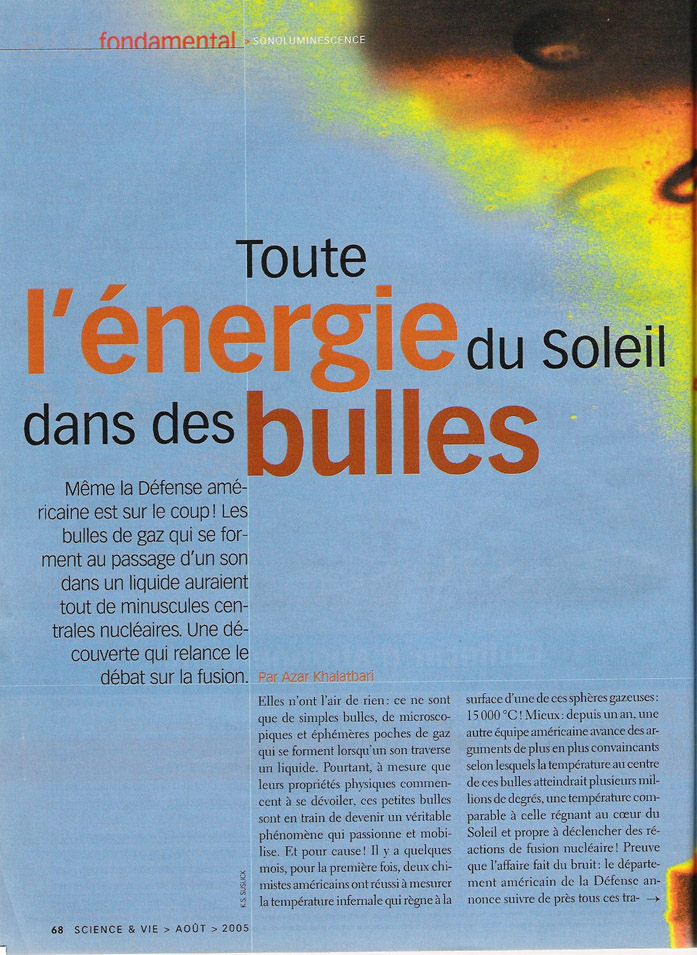
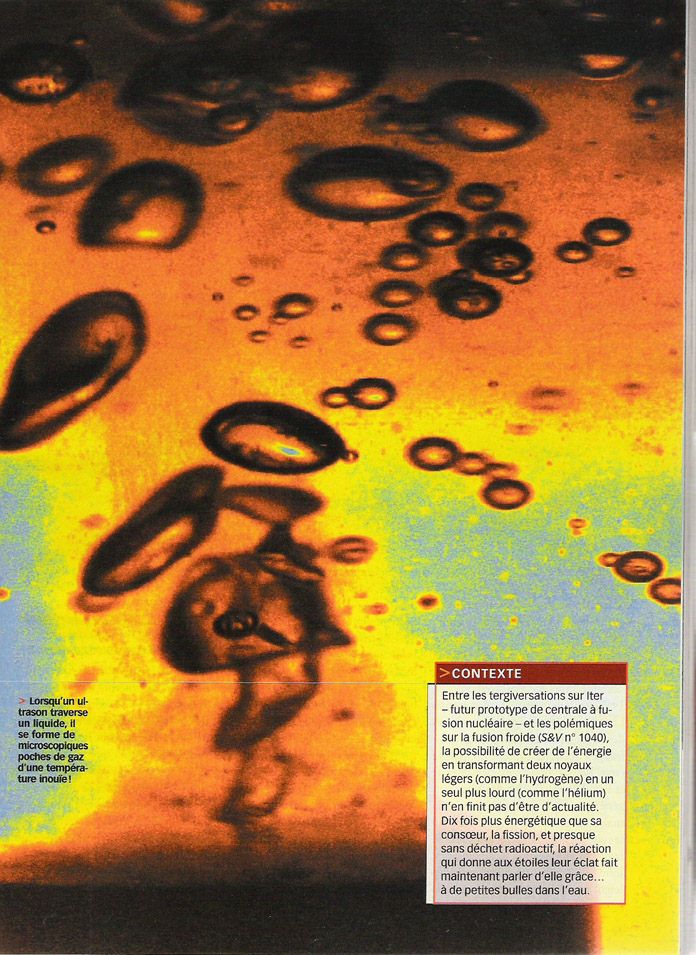
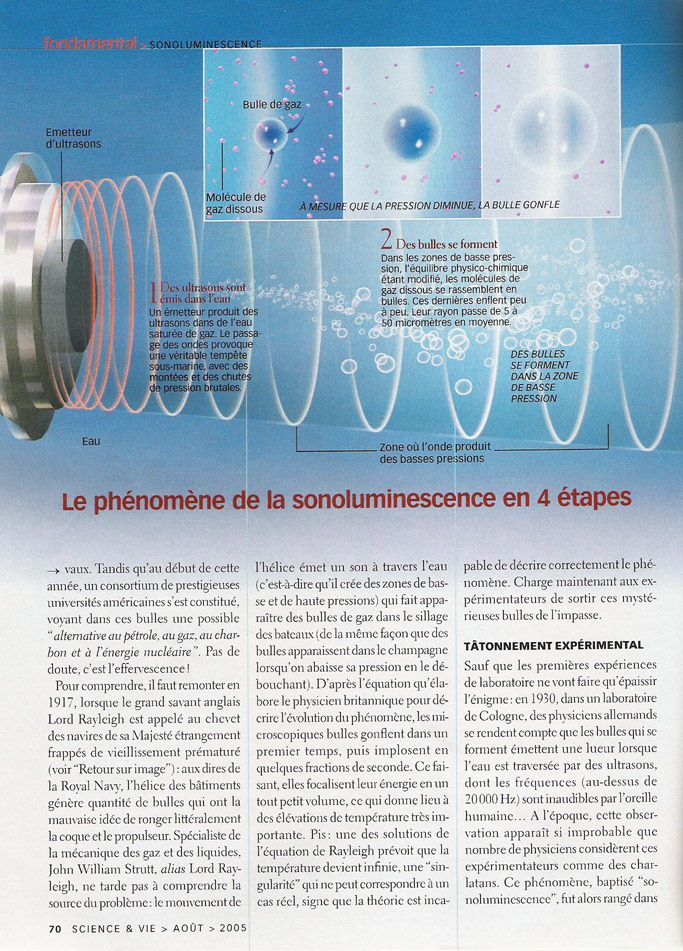
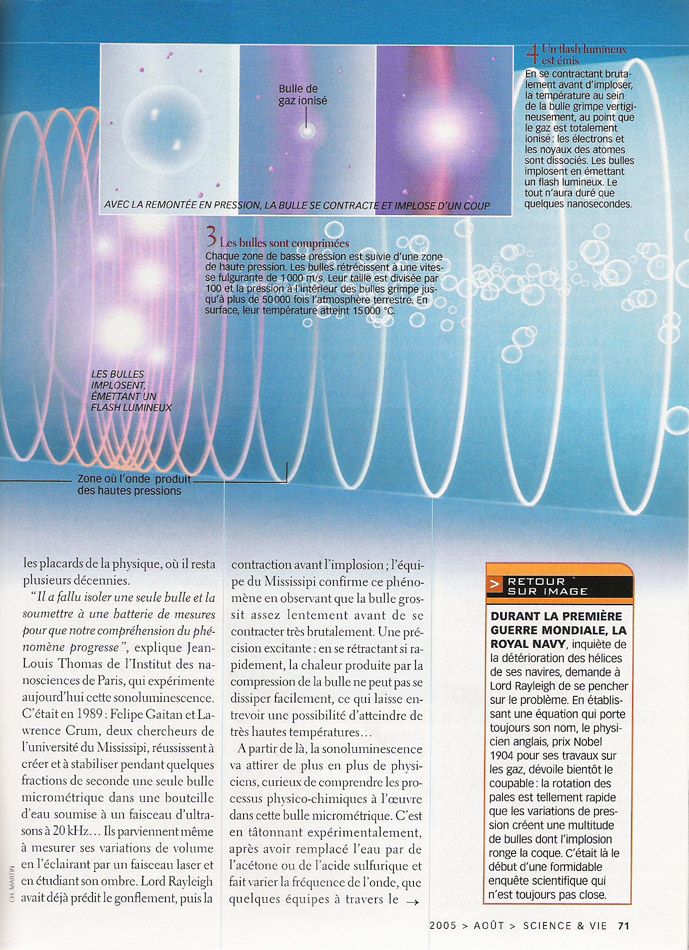
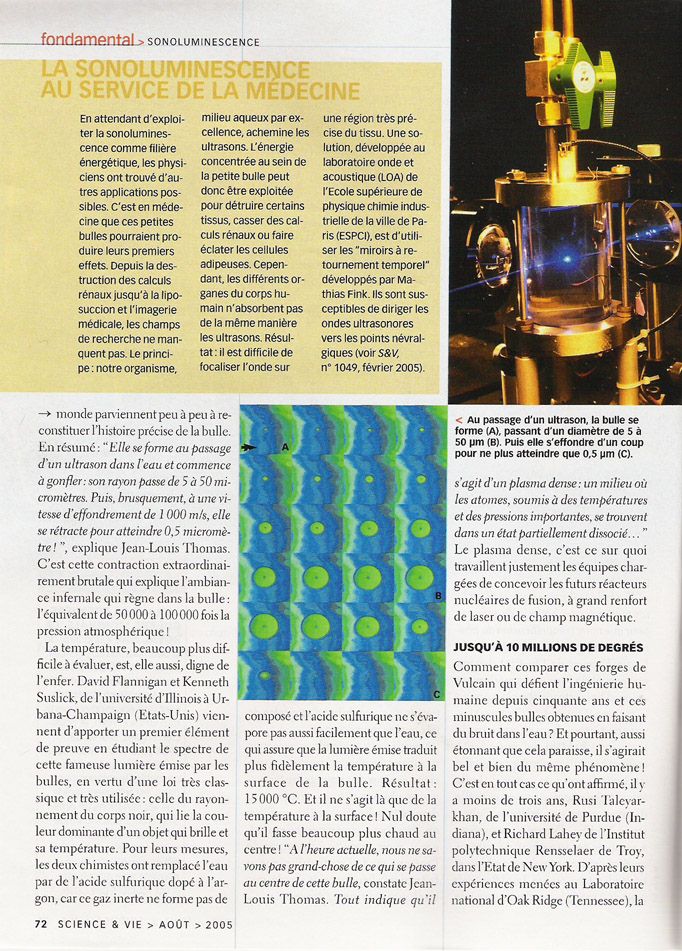
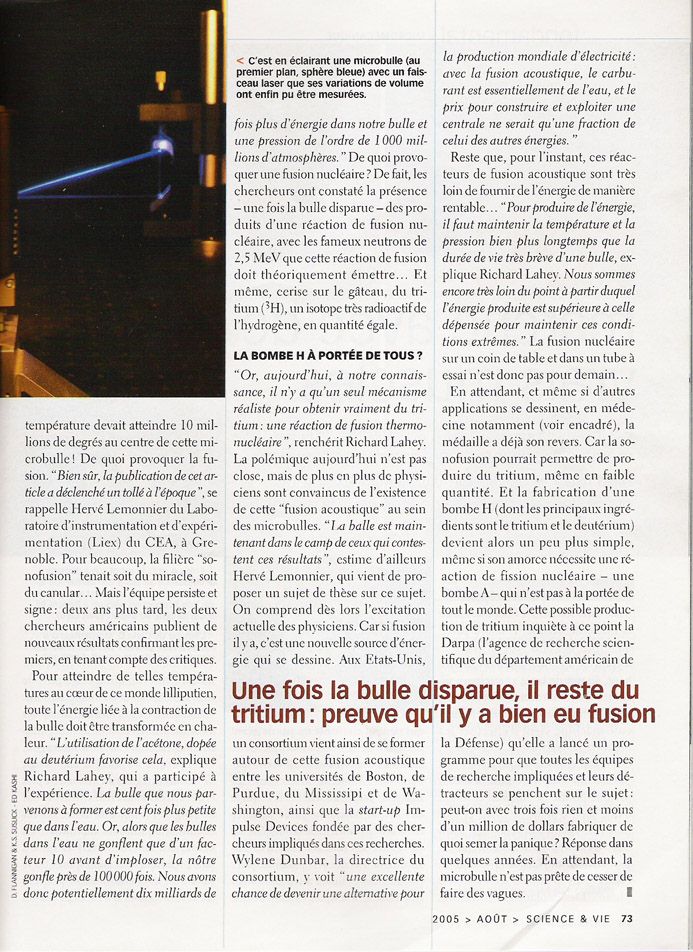








Thermonuclear fusion: whenever I have had the opportunity to speak to an orthodox physicist about possible alternative schemes, ie mechanisms leading to fusion other than the Tokamak path, they have replied that fusion requires very high speeds particles which will collide, in order to be able to overcome Coulomb's repulsion from nuclei. These speeds correspond to an energy of the order of magnitude of 10 keV which corresponds to the energy of thermal agitation for temperatures of the order of 100 million degrees.
But locally and particularly at the microscopic level of the microbubbles of the sonoluminescence, it could be that a significant number of particles reach this energy. The particles follow a statistical distribution of velocities along a curve (eg Maxwell or Gauss) so that a certain percentage can reach the melting conditions even for a lower average velocity of the particles.
In fact some explanations proposed for "cold fusion" also use this remark. But there are other theories and interpretations.
Very cordial friends, see you soon, Andre.



dedeleco wrote:(...)
Read the many articles in scientific journals and other arXiv where sonoluminescence has been studied for a long time with in particular X-ray emissions and more evidence of high energy that make a fusion possible.
X-ray detection is a way of knowing it, seriously, but with the problem of the absorption of X-rays by water.
little excerpt from this saga:
http://en.wikipedia.org/wiki/Sonoluminescence
http://www.nature.com/nchina/2008/08101 ... 8.241.html
With a saga that shows the difficulty of knowing the truth:
http://www.sciencedaily.com/releases/20 ... 155542.htm
http://en.wikipedia.org/wiki/Rusi_Taleyarkhan
http://www.nature.com/news/2009/091123/ ... .1103.html
false or true ?????
big work not finished !!
misconduct does not mean everything wrong !!
Read all google (2750 links):
http://www.google.fr/search?num=100&hl= ... =&aql=&oq=
We do not know today whether this difference between theory and observation is due to the inaccuracies of known models when we bring them to extreme conditions like those of sonoluminescence or if a phenomenon which has not been considered until then is at 'artwork.
In 2002, a physicist was considering a nuclear fusion reaction (see cold fusion), triggered by the shock wave, but these results having not been reproduced, they remain highly criticized by the scientific community.
D. Flannigan's experiment made it possible to demonstrate that the temperature at the heart of the bubble reaches 20 Kelvins, which is the equivalent of the temperature on the surface of a star. The argon bubble is, moreover, three thousand times more luminescent than a bubble produced in water [000]. Ionized oxygen was also discovered on the surface of the bubble. The hypothesis of the presence of a plasma at the heart of the bubble would explain this ionization.
Based on the experiences of American researchers Rusi Taleyarkhan (University of Purdue, Indiana) and Richard Lahey (Rensselaer Polytechnic Institute of Troy, New York), it seems that the temperature at the center of the bubbles can reach 10 million degrees. They recorded the emission of neutrons at 2.5 MeV and detected the presence of tritium after the reaction.
The principle describes the resonance of the water molecule.

(...)
Some information on sonoluminescence:
* The light flashes emitted by the bubbles are extremely short, between 35 and a few hundred picoseconds, with intensity peaks of the order of 1 mW to 10 mW.
* The bubbles are very small when they emit light, around the micrometer in diameter. This depends on the ambient fluid (for example, water) and the gas contained in the bubble (for example, air).
* Single bubble sonoluminescence can have very stable periods and diameters. However, the analysis of the stability of a bubble shows that the bubble itself is subject to significant geometric instabilities, due to the Bjerknes forces and the Rayleigh-Plesser instabilities.
* By adding a small amount of a noble gas (such as helium, argon, or xenon) to the gas in the bubble, you can increase the intensity of the light emitted.
The wavelength of the emitted light is very short, its spectrum can reach the ultraviolet. The lower the wavelength of light, the higher its energy. The measurement of the light spectrum suggests a temperature in the bubble of at least 20 Kelvin and up to a temperature exceeding one megakelvin.
(...)
Back to "Science and Technology"
Users browsing this forum : No registered users and 117 guests